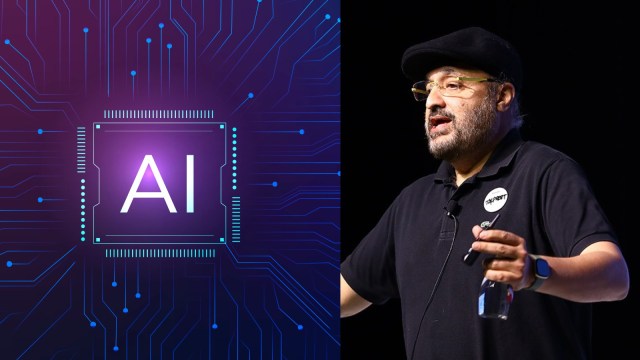
In the recent episode of’ Tech Whisperer Podcast’ hosted by indianexpress.com, tech entrepreneur Jaspreet Bindra unveiled an ambitious vision to develop India’s own large language model for generative AI and offer it as a digital public good to over 1.4 billion citizens, much like existing public infrastructure such as digital payments and digital identity.
Dubbed “Jan AI,” short for Janta AI meaning “people’s AI” in Hindi, the idea aims to empower Indians by democratising access to advanced AI. “Offer generative AI to 1.4 billion Indians as a digital public good the same way that we offered payments, identity, commerce, etc., and we will effectively transform them,” Bindra told the host Nandagopal Rajan.
Bindra draws inspiration from India’s globally recognised success in building inclusive digital infrastructure at a massive scale. “India is the only country in the world which has done this before. We know how to create public infrastructure at scale and offer it with the right governance as a digital public good.”
While ambitious, Bindra believes Jan AI is achievable with the right partnerships between government, private sector, and academia. “These governance structures already exist. We just need to use that knowledge and create another governance structure which will build this and add to the India stack and offer Jan AI as a digital public good.”
The key ingredients identified by Bindra include assembling diverse Indian language datasets, investing in GPU compute infrastructure with help from industry leaders like Nvidia, and leveraging India’s deep talent pool in AI.
India’s linguistic diversity poses unique complexities but also enormous opportunities, according to Bindra. “There are these complexities – multiple official languages, hundreds of dialects – that will take time to incorporate. But once you have that, think about the benefits,” he remarked.
Bindra illustrated how localisation is key for inclusive AI using the example of land records and measurements. “Land in every part of India is measured differently – bighas, killas, marlas. If you have a ChatGPT trained on Western data, it’s useless for most Indians including farmers,” Bindra explained. He argued that “the complexity is a problem but also an opportunity” for India to lead in multilingual AI with broad applications across languages and cultures globally.
Bindra outlined the massive potential benefits of Jan AI in sectors like healthcare, education, legal rights, agriculture, and enabling tens of millions of creators to participate in the global creator economy. As examples, he pointed to Microsoft’s Jugalbandi app powered by generative AI that helps underprivileged citizens identify government schemes relevant to them and startups like Koo that could benefit enormously from access to localised AI models.
“If you have a large language model integrated into the India stack and offered for free much like UPI, you have the potential to create tens of millions of creators plugged into the global economy,” said Bindra.
While enthusiastic about the idea, Bindra acknowledged the persisting challenges in getting government commitment during election season, budget constraints, and infrastructure limitations globally in acquiring adequate GPU capacity.
Nonetheless, he remains upbeat that the benefits outweigh the challenges in the long run. As next steps, Bindra and colleagues are testing the concept with leading experts in industry, academia, and government while continuing to build grassroots support through public discourse.
Bindra points to UAE’s recent success in developing large language models attuned to Arabic as an inspiring example, albeit for a much smaller nation. “If the UAE could invest and build models customised for Arabic, I’m confident India with its talent and resources can develop models catering to various Indian languages,” he asserted.
“I’m very confident that we will build something like this,” he signed off positively.
